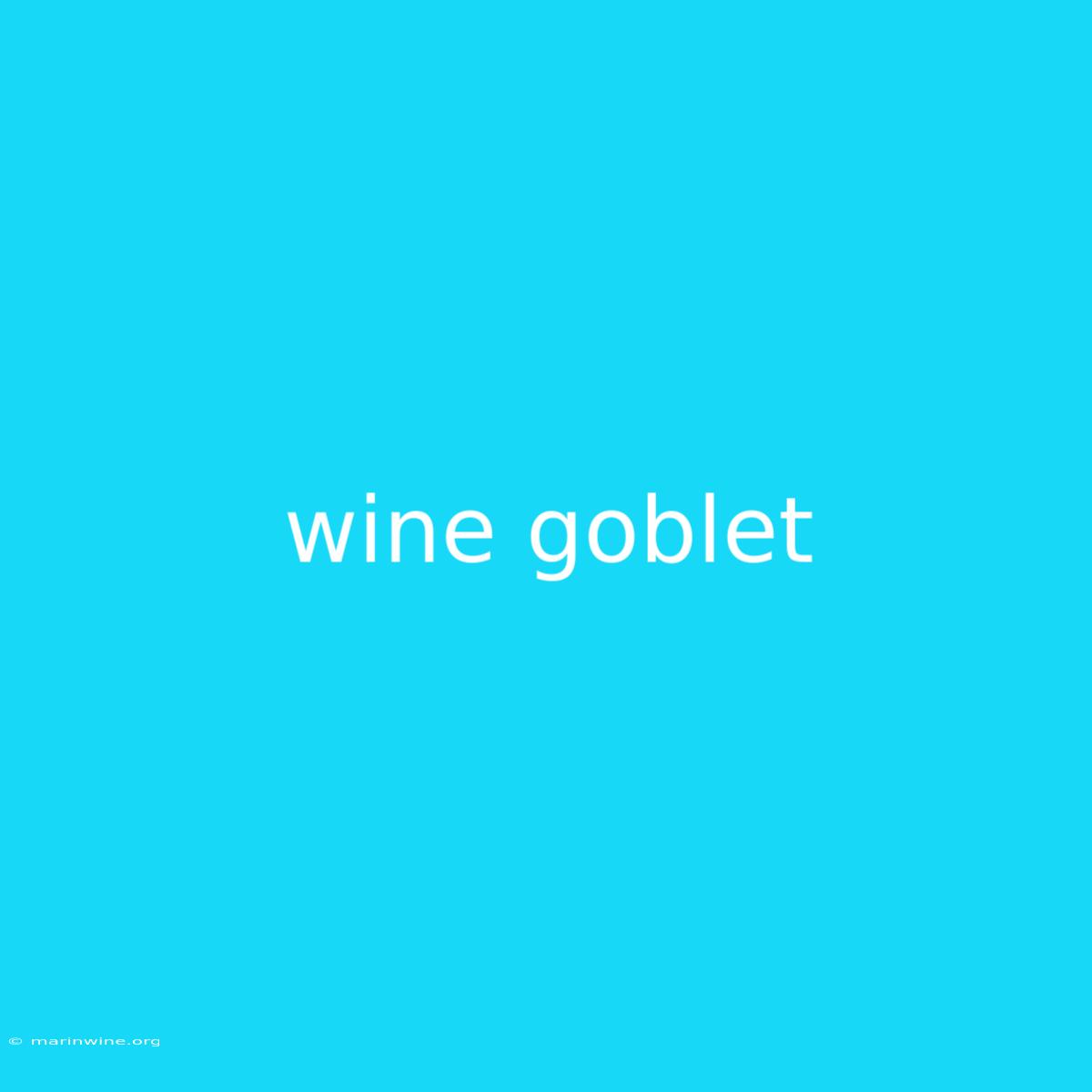The Art and Science of the Wine Goblet: Unlocking the Flavors
Have you ever wondered why wine glasses come in so many shapes and sizes? It's not just about aesthetics; the shape of a wine goblet plays a crucial role in enhancing the aromas, flavors, and overall experience of your favorite wine.
Why It Matters
Understanding the design of a wine goblet is essential for any serious wine enthusiast. The right glass can amplify the nuances of a particular wine, revealing subtle notes that might otherwise be missed. It's not just about enjoying the wine; it's about appreciating the artistry of the winemaker and the science behind the glass itself.
Key Takeaways of Wine Goblets:
| Feature | Description | Impact |
|---|---|---|
| Shape | The bowl's shape dictates how the wine interacts with oxygen and how it's directed towards your nose. | Influences aroma intensity and flavor development. |
| Rim | The opening of the glass controls how the wine reaches your mouth. | Affects the wine's mouthfeel and overall taste perception. |
| Stem | Provides a comfortable grip without warming the wine with your hand. | Ensures optimal temperature control for the wine. |
| Base | Offers stability to the glass and prevents accidental spills. | Important for practicality and safe handling. |
Wine Goblets: Unveiling the Secrets
1. The Bowl:
The bowl's shape is the most important aspect of a wine goblet. It influences the wine's aromas, bouquet, and flavor profile.
- Wider Bowl: A wider bowl allows the wine to breathe and develop its aromas more fully. This is ideal for wines with complex aromas, such as Cabernet Sauvignon or Pinot Noir.
- Narrower Bowl: A narrower bowl concentrates the wine's aromas and flavors, making them more intense. This works well for lighter-bodied wines like Sauvignon Blanc or Riesling.
2. The Rim:
The rim of the glass determines how the wine reaches your mouth.
- Thin Rim: A thin rim allows the wine to flow smoothly onto your tongue, emphasizing the flavors. This is preferred for delicate wines with subtle nuances.
- Thicker Rim: A thicker rim provides a more concentrated taste and allows the wine to linger on the palate longer. This is suitable for full-bodied wines with bold flavors.
3. The Stem:
The stem serves as a handle and prevents the wine from warming up in your hand. It's important to hold the wine glass by the stem, not the bowl, to maintain the optimal temperature.
4. The Base:
The base provides stability and balance to the glass, preventing accidental spills. It also contributes to the overall aesthetics of the glass.
The Connection between Wine and Goblet
The relationship between wine and goblet is a delicate dance, where each component complements and enhances the other. The shape of the glass guides the wine's journey, allowing its flavors to unfold and its aromas to bloom. For example, the narrow bowl of a Pinot Noir glass concentrates the wine's delicate floral and cherry notes, while the wider bowl of a Bordeaux glass allows the powerful tannins of Cabernet Sauvignon to breathe and soften.
FAQ
1. What's the difference between a wine glass and a goblet?
- A wine glass is a broader term that includes various types of glasses for serving wine.
- A goblet is a specific type of wine glass with a stem and a wider bowl.
2. Can I use any glass for wine?
- While you can technically drink wine from any glass, the right glass significantly enhances the experience. It allows you to appreciate the full potential of the wine.
3. How do I choose the right wine goblet?
- Consider the type of wine you're serving.
- Look for a glass designed specifically for that wine.
- Pay attention to the bowl's shape, rim, and stem.
4. Are there different glasses for different types of wine?
- Yes, there are specialized glasses for different wine styles, such as red wine, white wine, sparkling wine, and dessert wine.
5. How do I clean and care for my wine goblets?
- Wash them by hand with warm, soapy water.
- Avoid using harsh detergents or abrasives.
- Dry them with a soft cloth to prevent water spots.
6. How do I know if my wine goblet is the right size?
- The bowl should be large enough to hold a generous pour, but not so large that it overwhelms the wine's aromas.
- The rim should be wide enough to allow the wine to flow smoothly onto your tongue.
Tips for Wine Goblets
- Consider the type of wine you're serving. Choose a glass specifically designed for that wine type.
- Handle the glass by the stem. Avoid touching the bowl to prevent warming the wine.
- Don't overfill the glass. Leave some space at the top for the wine to breathe.
- Clean your goblets regularly. Hand-washing is recommended to preserve their delicate design.
- Experiment with different glasses. Find the ones that best enhance your enjoyment of your favorite wines.
Summary by Wine Goblets
The art and science of the wine goblet extends beyond mere aesthetics. It's about unlocking the hidden potential of each wine, revealing its intricate flavors and aromas through the careful design of the glass. By understanding the key features of a wine goblet, you can elevate your wine-tasting experience and truly appreciate the art and science that goes into creating a perfect sip.
Closing Message:
The next time you raise a glass to a toast, take a moment to appreciate the intricate design of the goblet in your hand. It's a silent partner, working behind the scenes to enhance your enjoyment of each sip. Let this newfound knowledge inspire you to explore the world of wine goblets and discover the unique flavors they can bring to your wine-tasting journey.

